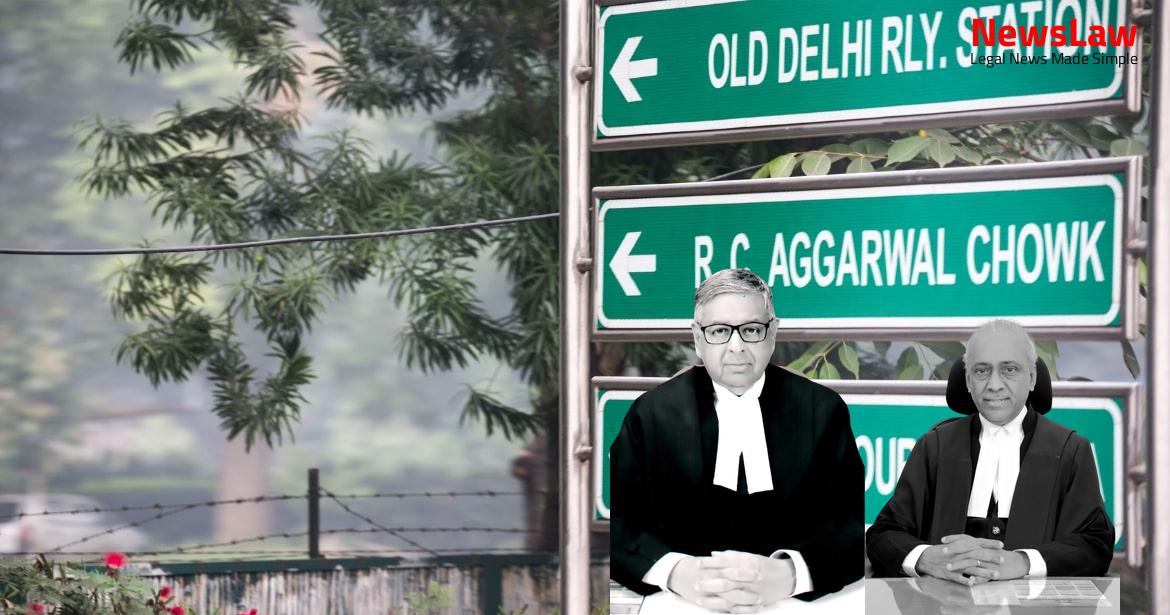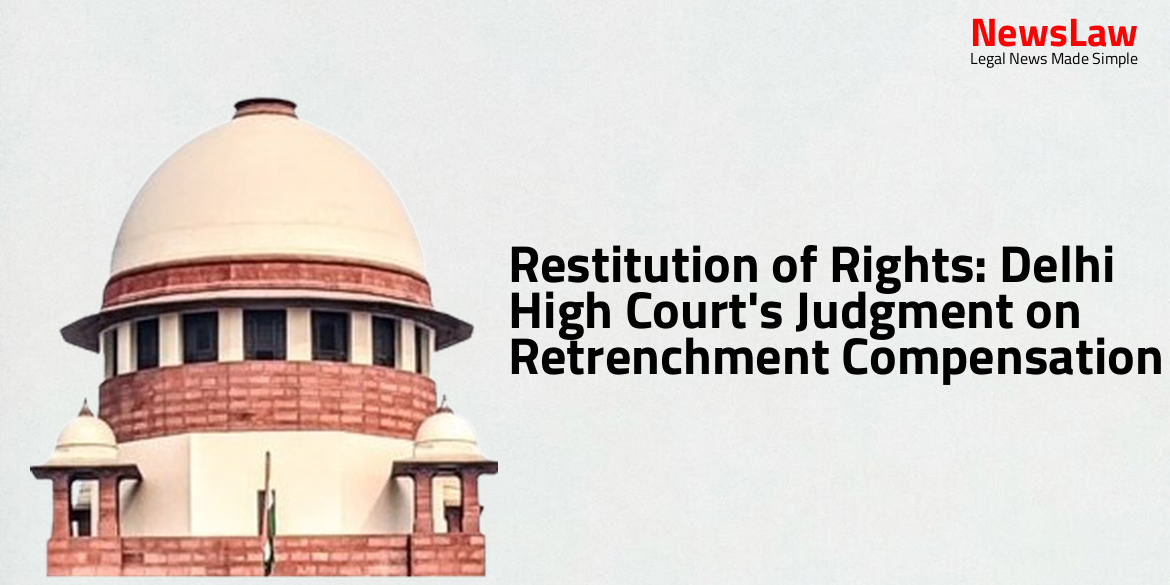In a significant legal development, the Supreme Court of India has issued a momentous judgment in the case of DB International Asia Ltd. v. Maharashtra Seamless Ltd. This ruling pertains to crucial aspects of the Insolvency Resolution Process, reshaping the landscape of corporate insolvency proceedings. The decision is set to have far-reaching implications for stakeholders involved in the matter, including DB International Asia Ltd. and Maharashtra Seamless Ltd. Let’s delve deeper into the implications of this landmark judgment.
Facts
- The Adjudicating Authority approved the resolution plan submitted by MSL on 21 January, 2019.
- MSL had grievances regarding access to the assets of the corporate debtor.
- A direction was given for MSL to deposit an additional amount of Rs.120.54 crores within 30 days to uphold the resolution plan approval.
- The Adjudicating Authority directed the Resolution Professional to reconvene the Committee of Creditors (CoC) for reconsideration of qualified Resolution Plans.
- The CoC approved MSL’s resolution plan after reevaluation, valuing the corporate debtor at Rs.352 crores.
- A third valuer, Duff and Phelps, was appointed by the Committee due to significant discrepancies in valuations.
- The implementation of the Plan was subject to the outcome of the appeal in progress.
- The matter was brought before the National Company Law Appellate Tribunal by DB International (Asia) Ltd., Deutsche Bank AG, Singapore Branch, and MSL.
- The upfront amount for the resolution plan is proposed to be increased to Rs.597.54 Crores.
- The distribution of the total amount among Financial Creditors and Operational Creditors should be at the same ratio as suggested.
- The total working capital is Rs. 224 Crores, with the balance to be taken as a loan from Banks.
- Corporate Guarantees of the 4 Respondent are required for the loan.
- The Corporate Debtor has not met its production capacity over a seven-year period.
- Extensive further investments are needed to get the Corporate Debtor up and running.
- The Successful Resolution Applicant offered Rs. 477 Crores, payable within 30 days of plan approval.
- The Resolution plan submitted by M/s Maharashtra Seamless Limited is approved and binding on the Corporate Debtor and stakeholders.
- The total exposure of the Successful Resolution Applicant is around Rs. 657.50 Crores.
- Modification of the plan is required before M/s. Maharashtra Seamless Limited can take over the Corporate Debtor.
- The resolution plan includes a payment of 25% to Financial Creditors.
- The infusion of funds by M/s. Maharashtra Seamless Ltd. is for maximization of the assets of the Corporate Debtor.
Also Read: VVF India Ltd. vs. Employee Union: Wage Revisions & Benefits Case
Issue
- The first issue is whether the scheme of the Code requires the sum in the resolution plan to match the liquidation value.
- The second issue is whether Section 12-A is the correct route for a successful Resolution Applicant to retreat.
- Arguments were raised about the Adjudicating Authority not maintaining parity between financial creditors and operational creditors in clearing dues.
- Section 30 (2) (b) of the Code was relevant in this discussion.
Arguments
- Padmanabhan Venkatesh and the Bank raised a complaint before NCLAT primarily regarding the approval of a resolution plan amounting to Rs.477 crores, which they believed would give the Resolution Applicant a windfall by acquiring assets valued at Rs.597.54 crores at a much lower amount.
- They argued that the ‘Corporate Debtor’ plant had been closed for the past three years.
- NCLAT held in Company Appeal No.637/2018 that this Tribunal should decide on the Application under Section 31 of IBC without being influenced by previous orders.
- The revised Liquidation value was deemed irrelevant in considering the Resolution Plan submitted by M/s MSL.
- It was contended that the Resolution Applicant did not obtain prior approval of the CCI as required under Section 31(4) of the Code.
- MSL in the appeal seeks to sustain the resolution plan but requests refund of the amount remitted and withdrawal of the plan.
- Counsel for Resolution Professional argues that CCI approval is not required as MSL’s plan does not fall under CCI provisions.
- Director (Suspended Board) raised CCI approval issue in CoC meeting which was deemed unnecessary.
- Section 31(4) mandates Resolution Applicant to obtain necessary approvals under existing laws within a year.
- Bank argues that another Resolution Applicant offered a higher amount of Rs.490 crores.
- Mr. Abhishek Manu Singhvi, representing main financial creditors, supports the appeal but opposes plan withdrawal and refund of remitted sum.
- Singhvi explains that his clients are major creditors and stand to lose if the resolution plan fails to meet liquidation value.
- Section 12-A of the 2016 Code allows withdrawal of application with 90% CoC approval.
- Approximately Rs.472 crores were remitted to financial creditors from Mr. Sibal’s clients, while Operational Creditors were discriminated against.
- Resolution Applicant can obtain necessary approvals within a year if required.
- In the appeal, it is argued that final decision on resolution plan should be at CoC’s discretion, not bound by asset maximization.
- D.B. International Asia Limited, with 73.40% CoC voting shares, challenges the order similarly to MSL.
- Mr. Singhvi refers to Section 12-A of the 2016 Code regarding plan withdrawal.
Also Read: Legal Analysis of M/S Rajco Steel Enterprises v. Kavita Saraff: The Dynamics of Dishonoured Cheques
Analysis
- The Adjudicating Authority cannot interfere with the commercial decision taken by the Committee of Creditors but can review if the corporate debtor’s interests are considered.
- If key parameters are not taken into account, the Adjudicating Authority can send the resolution plan back to the CoC.
- The discretion of payment to creditors lies with the CoC, but it must maximize the corporate debtor’s value and balance stakeholders’ interests.
- The resolution plan should meet Sub-sections (2) and (4) of Section 30 of the Insolvency and Bankruptcy Code.
- The Resolution Applicant may improve the plan within a specified time frame for final approval.
- The CoC bears the commercial wisdom in approving the plan.
- Operational creditors do not necessarily need to be paid the same percentage as financial creditors.
- The Adjudicating Authority’s role is to ensure the plan meets the Code’s requirements.
- The NCLAT’s direction to match liquidation value in the resolution plan exceeded jurisdiction.
- The Preamble indicates the Code’s objective is reorganization and insolvency resolution.
- Liquidation value, as per the Code, is the estimated realizable value if the corporate debtor were to be liquidated.
- Operational creditors’ rights need to be addressed in the resolution plan, without mandating equal payment as financial creditors.
- The resolution plan must have provisions for implementation to support the resolution process effectively.
- Fresh resolution plans may be invited if the initial applicant is found ineligible as per Section 29A.
- Section 30 of the Insolvency and Bankruptcy Code is reproduced.
- A resolution applicant can submit a resolution plan along with an affidavit of eligibility under section 29A.
- The Adjudicating Authority can approve the resolution plan if it meets the requirements specified.
- The approved resolution plan is binding on the corporate debtor, employees, members, creditors, guarantors, and other stakeholders.
- The Adjudicating Authority must ensure the resolution plan has provisions for effective implementation before approval.
- If the resolution plan does not meet the requirements, the Authority can reject it.
- After approval, the moratorium order ceases, and the resolution professional transfers relevant records.
- Various conditions for the resolution plan’s approval and implementation are outlined.
- The resolution professional must ensure the plan accounts for insolvency resolution process costs and payments to creditors.
- Specific payment provisions for operational and financial creditors are detailed.
- Explanations clarifying fair distribution to creditors are provided.
- The preamble of the Insolvency and Bankruptcy Code emphasizes on maximizing the value of assets of corporate debtors and balancing the interests of all stakeholders.
- The Code aims to ensure that the corporate debtor remains operational during the insolvency resolution process by making payments to operational creditors for the business to continue as a going concern.
- Various sections and regulations within the Code highlight the importance of the corporate debtor operating as a going concern during insolvency resolution.
- Regulation 38(1A) requires a resolution plan to consider the interests of all stakeholders, including operational creditors.
- Operational creditors are given priority in payment over financial creditors under a resolution plan, reflecting the need to balance the interests of all stakeholders.
- The core objective is to maximize the value of assets, promote entrepreneurship, ensure availability of credit, and balance the interests of all stakeholders.
- The Committee of Creditors must consider these key features of the Code to make informed decisions in reviving the corporate debtor and promoting entrepreneurship.
- A judgment in the case of Committee of Creditors of Essar Steel India Limited v. Satish Kumar Gupta reinforces the importance of looking after the interests of all stakeholders in insolvency resolution.
- The resolution scheme benefits workers, ensures repayment to the creditors, and allows shareholders/investors to maximize their investments, ultimately aligning with the principle of balancing stakeholders’ interests.
- The NCLAT order does not address a specific aspect of the controversy
- The court does not find it necessary to determine that question in this case
- Jurisdiction under Section 62 of the Code does not extend to engaging in that specific question
Decision
- The Resolution Professional is directed to take physical possession of the assets of the corporate debtor and hand it over to MSL.
- The appeal of MSL is allowed, and the NCLAT order is set aside.
- No costs are awarded.
- Police and administrative authorities are directed to assist the Resolution Professional.
- All interim orders are dissolved and connected applications are disposed of.
- MSL is directed to remit an additional sum of Rs.50,72,237 to the Resolution Professional for further remittance to operational creditors.
- I.A.No.115118 of 2019 is dismissed.
- Failure to comply will result in the plan approved in favor of M/s. Maharashtra Seamless Ltd. being set aside.
- The Adjudicating Authority will pass appropriate orders in accordance with the law.
- An application by MSL sought refund of deposited sum with interest and withdrawal of the resolution plan.
- The application of the Indian Bank under Section 7 of the Code filed on 12 June 2017 is affirmed.
- The Adjudicating Authority will direct the Resolution Professional to take over possession of the plant, offices, and other assets of the Corporate Debtor to ensure assets remain intact.
Case Title: MAHARASHTRA SEAMLESS LIMITED Vs. PADMANABHAN VENKATESH (2020 INSC 76)
Case Number: C.A. No.-004242 / 2019



